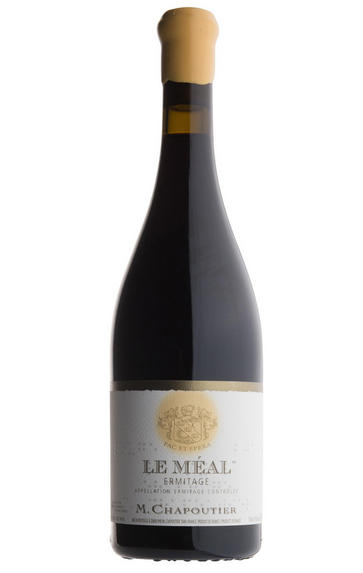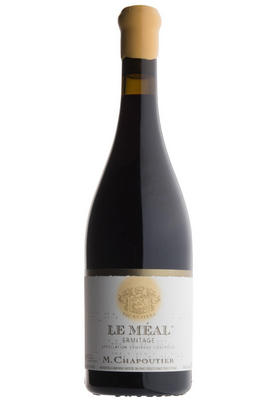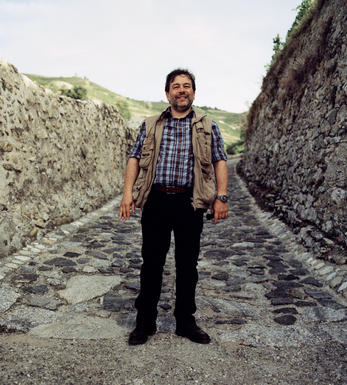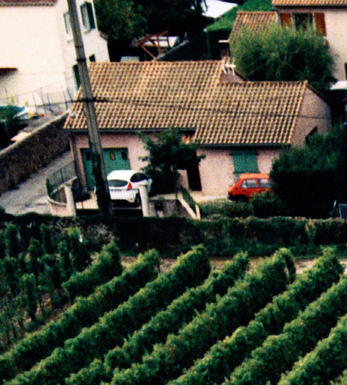
2010 Ermitage Rouge, Le Méal, M. Chapoutier, Rhône

Critics reviews
As I have written many times, all of these wines are produced from rigidly cultivated, bio-dynamically managed vineyards. That has been the rule since Michel Chapoutier first took over this firm in the late 1980s. Now, with over 20 years of biodynamic viticulture under his belt, Chapoutier remains committed to this rather radical style of organic farming. He believes the effect is to reduce rot in damp, rainy vintages.
Controversial, outspoken and brutally candid, Chapoutier, who suffers no fools, continues to admirably produce wines that are among the finest in the world and potentially the longest lived. Refusing to acidify, chaptalize, or touch the wines in any way, he clearly wants every wine to capture the very essence of its terroir and vintage personality.
(Robert Parker - Wine Advocate #198 Dec 2011)
(Jancis Robinson MW & Julia Harding MW - jancisrobinson.com - December 2011)
As I have written many times, all of these wines are produced from rigidly cultivated, bio-dynamically managed vineyards. That has been the rule since Michel Chapoutier first took over this firm in the late 1980s. Now, with over 20 years of biodynamic viticulture under his belt, Chapoutier remains committed to this rather radical style of organic farming. He believes the effect is to reduce rot in damp, rainy vintages.
Controversial, outspoken and brutally candid, Chapoutier, who suffers no fools, continues to admirably produce wines that are among the finest in the world and potentially the longest lived. Refusing to acidify, chaptalize, or touch the wines in any way, he clearly wants every wine to capture the very essence of its terroir and vintage personality.
(Robert Parker - Wine Advocate #198 Dec 2011)
About this WINE

Maison Chapoutier
Applying his usual break-neck rigour to the presidency of InterRhône has not in any way distracted Michel Chapoutier. His range is more impressive in scope than ever, providing the most complete dissection of the region’s styles and terroir. Founded in 1808, Michel took charge in 1988 and became the seventh generation of his family to run the domaine. Since then, quality has soared and he is now farming all his vineyards biodynamically. He also invests in new winemaking projects across the globe, as far-flung as Australia. His children, in particular his daughter, Mathilde, are now increasingly involved in the day-to-day management of the maison, bringing with her her entrepreneurial skills and vision.
Michel describes 2021 as a vintage the vignerons were unlikely to forget in a hurry, bringing an array of challenges that only hard work could overcome. It also brought a style of wines he thought long forgotten: ethereal in nature, with aromatic complexity, lower alcohols and bright acidities. They offer great elegance and finesse overall.
You might remember that we offered Chapoutier’s 2021 sélection parcellaire back in October last year – an impressive range of his single vineyards, including his prestigious Ermitages. We do have small volumes left of some lines so if you’re interested in seeing a complete list, please speak to your Account Manager.
Hermitage
Hermitage is the most famous of all the northern Rhône appellations. The hill of Hermitage is situated above the town of Tain and overlooks the town of Tournon, just across the river. Hermitage has 120 hectares and produces tiny quantities of very long-lived reds.
The vines were grown in Roman times, although local folklore claims their origins to be nearly 600 years earlier. The name ‘Hermitage’ first appeared in the 16th century, derived from a legend of the 13th century Crusade, involving a wounded knight called Gaspard de Stérimberg, who made refuge on the hill, planted vines and became a hermit.
During the 17th century, Hermitage was recognised as one of the finest in Europe. In 1775, Château Lafite was blended with Hermitage and was one of the greatest wines of its day. In the late 19th century, however, Phylloxera wiped out all the vineyards.
The wines are powerful, with a deep colour and firm tannins, developing into some of the finest examples in France, with the potential to age for many decades. The best Hermitage is produced from several climats or more, blended together. The main climats are Les Bessards, Le Meal, L’Hermite, Les Greffieux and Les Diognieres. Most of the finest climats face broadly south, giving maximum sunshine. Most growers only have one or two climats and they might not complement each other; Hermitage quality can therefore vary hugely. Only the top producers have extensive diversified holdings.
80% of the wine produced is red, however up to 15% of white grapes can be used in the blend. Most growers use 100% Syrah and utilise the white grapes to make white wines only. Chapoutier, Jaboulet and Tain l'Hermitage are the principal proprietors of the appellation’s vineyards.
The white wines are made from the Marsanne and Roussanne grapes. Great white Hermitage can age, taking on the fruit characters of apricots and peaches, often giving a very nutty finish. The best examples in great vintages can last 50 years.
Mature red Hermitage can be confused with old Bordeaux. In a blind tasting of 1961 First Growth Clarets, the famous 1961 Hermitage La Chapelle was included. Most people, including its owner, Gerard Jaboulet, mistook it for Château Margaux.

Syrah/Shiraz
A noble black grape variety grown particularly in the Northern Rhône where it produces the great red wines of Hermitage, Cote Rôtie and Cornas, and in Australia where it produces wines of startling depth and intensity. Reasonably low yields are a crucial factor for quality as is picking at optimum ripeness. Its heartland, Hermitage and Côte Rôtie, consists of 270 hectares of steeply terraced vineyards producing wines that brim with pepper, spices, tar and black treacle when young. After 5-10 years they become smooth and velvety with pronounced fruit characteristics of damsons, raspberries, blackcurrants and loganberries.
It is now grown extensively in the Southern Rhône where it is blended with Grenache and Mourvèdre to produce the great red wines of Châteauneuf du Pape and Gigondas amongst others. Its spiritual home in Australia is the Barossa Valley, where there are plantings dating as far back as 1860. Australian Shiraz tends to be sweeter than its Northern Rhône counterpart and the best examples are redolent of new leather, dark chocolate, liquorice, and prunes and display a blackcurrant lusciousness.
South African producers such as Eben Sadie are now producing world- class Shiraz wines that represent astonishing value for money.


Buying options
Add to wishlist
Description
Le Méal is, not inappropriately, an old French word, meaning ‘the best’. From the usual old vine (60 years and counting), low yield (20 hl/ha) combination, Le Méal is dense and unyielding in youth. The tannic straightjacket will soften into cashmere folds as the Syrah is allowed to flow harmoniously over the stony but profoundly deep bedrock of fruit; indeed the silkiness is already evidenced; here we have a veritable iron fist in the velvet glove. Or is it the other way round?
Simon Field MW, BBR Buyer, February 2012
Amongst the most celebrated, rarest and over-subscribed wines in the Rhône Valley, the Selections Parcellaires are the finest expressiosn of terroir, mostly the soils of the Hill of Hermitage, the minutiae of which are painted with pointillist attention to detail and unparalleled expertise. Inevitably they are made in modest quantities. Do not be too taken aback by the fact that Michel drops his ‘h’s when describing his Ermitage. It is not an estuary French, rather an acknowledgement of ancient spelling.
wine at a glance
Delivery and quality guarantee